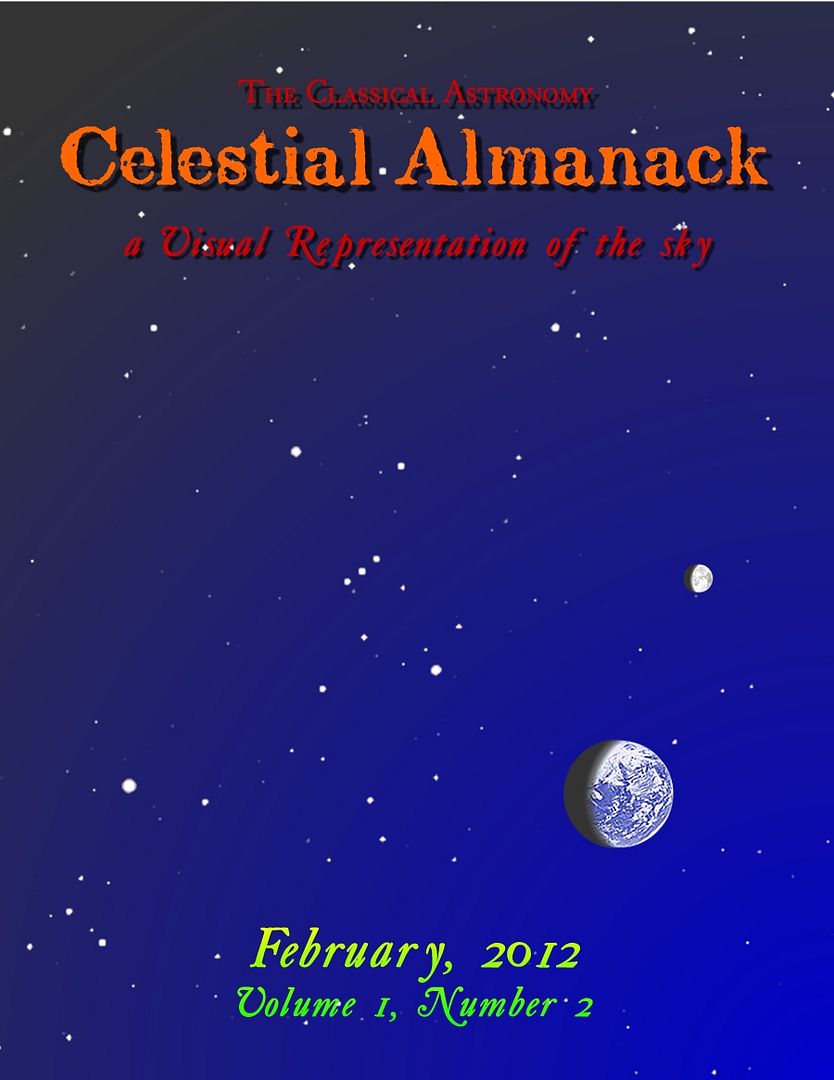
Every once in a while, when my family is out camping, I look up at the sky and wish that I could identify at least a constellation or two. Perhaps it's part of the Super Homeschool Mom myth -- I should be able to teach my kids something when it's a night clear enough to see the stars. Instead I usually just point at a few starts and try to convince the kids that it's the Big Dipper.
 Celestial Almanack from Fourth Day Press transformed me from a Astronomer Wannabe to a Novice Astronomer. I actually didn't realize how little I knew about astronomy until I started reading. For instance, I always believed the saying, "The sun sets in the west." I learned that the sun only sets directly to the west on certain days of the year. I shared this information with my husband, and we had an ah-ha moment. That's the reason why the sun was sometimes directly in our eyes when we were traveling from Washington DC to Philadelphia. When we assumed the sunset was directly to the west, we couldn't figure out how the road ran to the west. It makes much more sense now that I realize that the setting sun could be in the northwest.
Celestial Almanack from Fourth Day Press transformed me from a Astronomer Wannabe to a Novice Astronomer. I actually didn't realize how little I knew about astronomy until I started reading. For instance, I always believed the saying, "The sun sets in the west." I learned that the sun only sets directly to the west on certain days of the year. I shared this information with my husband, and we had an ah-ha moment. That's the reason why the sun was sometimes directly in our eyes when we were traveling from Washington DC to Philadelphia. When we assumed the sunset was directly to the west, we couldn't figure out how the road ran to the west. It makes much more sense now that I realize that the setting sun could be in the northwest.After reading much of the information, I took my nook outside to see if I could use the star charts. Sure enough, I found Orion. Not just three random stars that I could convince myself were Orion's belt. I found the actual constellation -- the three stars for the belt and the four others. I can even name two of the stars. (For the record, the Almanack labels this an easy one-star activity, but I thought it was pretty cool.) Some of the other features of the night sky are a bit more difficult to see from our neighborhood, but I'm certain I could find them when I wasn't surrounded by trees.
In March, Jupiter and Venus will draw near to one another in the sky. I'm sure I'll see FB statuses telling me what specific night to go out and see this rare event. Thanks to Celestial Almanack I'll be even more prepared. By watching the planets draw near to each other throughout the month of February, we'll be more amazed when they actually meet. We'll also be able to witness the lead-up to the event even if it's too cloudy to see them on the night they finally meet.
I found the information in Celestial Almanack to be thorough but very understandable. I would consider it very appropriate for high school students, but my younger children will be able to grasp much of what I can now show them in the sky. Fourth Day Press offers Signs and Seasons, a full classical astronomy course for high schooler students ($39).
Celestial Almanack is a true bargain. You can download all of the information and charts for a month from CurrClick for only $3. Even if I can't keep up with the changes in the sky every month, I will never again go on a camping trip without a current version of the Almanack.
If you'd like to hear how much the other members of the review crew thought about Celestial Almanack, please visit The Old Schoolhouse Review Crew blog here.
I received Celestial Almanack (February as a member of the 2011 TOS Homeschool Review Crew, and I received no other compensation. In return, I agreed to give an honest review of the materials and how they worked for my homeschool family.


No comments:
Post a Comment